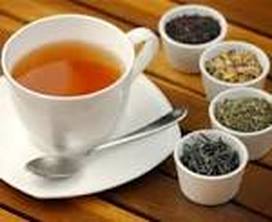<< PREVIOUS SECTION < PREVIOUS PAGE NEXT PAGE > NEXT SECTION >>
|
We know that the tea plant has been growing in Asia for centuries, indeed for millennia. Tea’s scientific name, Camellia sinenis, indicates that this evergreen plant is a member of the camellia family of Chinese origin. Tea has also been grown in India, Tibet, Burma, Japan and other regions of Southeast Asia since ancient times. In general, tea plants thrive best in subtropical mountainous areas, and over time, many varieties of tea have been propagated. Tea is often categorized into two types—green tea and black tea, and people are sometimes surprised to learn that both types come from the same plant. Green tea comes from fresh, unprocessed green tea leaves, and black tea comes from leaves that have been dried and have oxidized. Within these two classifications, there are many types of tea based on processing methods, blending and the location where the plants were grown. The following pages list of some of the primary types of tea and their characteristics.
|

